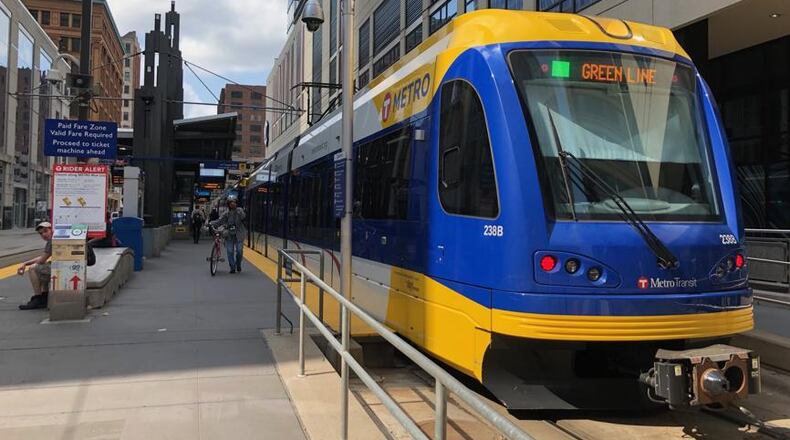MARTA would launch two bus rapid transit lines and make other bus improvements by 2025 under a timeline for its Atlanta expansion plan that its Board of Directors will consider next month.
Construction also would begin in coming years on an extension of the Atlanta Streetcar, a new Greenbriar transit center and the renovation of the Five Points station.
But some big-ticket projects — including light rail along the Clifton Corridor and a portion of the Atlanta Beltline — would not be completed until 2035 and beyond. That may not satisfy Beltline advocates who are pressing MARTA and the city to complete the full 22-mile light-rail loop by 2030.
Kay Stephenson, a member of the group Beltline Rail Now, said the group hoped to see a more ambitious plan.
"We need to see evidence that MARTA is aggressively working this and other opportunities to deliver meaningful transit faster," Stephenson said.
MARTA officials declined to discuss the proposed timeline, saying it’s preliminary and subject to change. It’s scheduled for a presentation and vote before the MARTA Board of Directors planning committee Thursday and for consideration by the full board in June.
A briefing prepared for Thursday’s meeting — obtained by The Atlanta Journal-Constitution — indicates the agency took a variety of factors into account when preparing the project sequencing plan. Among other things, the agency considered available funding, the status of various projects and the desire to distribute improvements equitably across the city.
The proposed timetable is the latest step in MARTA’s longtime effort to expand transit in Atlanta.
City voters approved a half-penny sales tax for a MARTA expansion in 2016. The tax is expected to raise about $2.7 billion over 40 years.
The agency solicited public input before it settled on a list of projects in October. That list seeks 29 miles of light rail, 13 miles of bus rapid transit lines, three arterial rapid transit routes, the renovation of existing rail stations and other improvements.
Now MARTA is close to finalizing a proposed timetable for those projects.
The plan calls for the Capitol Avenue/Summerhill bus rapid transit line and the first phase of the North Avenue BRT line to be in service by 2025. It calls for the three arterial rapid transit lines to be in service by that same year.
Also by 2025, under the plan:
- MARTA would renovate the Bankhead station and begin studying transit alternatives for the Campbellton Road Corridor in southwest Atlanta.
- Construction would begin on an Atlanta Streetcar extension east to Krog Street/Beltline Eastside Trail, the renovation of the Five Points station and a new transit center at Greenbriar Mall in southwest Atlanta.
- Planning would continue for the southwest and northeast segments of the Beltline light-rail loop around central Atlanta and the Clifton Corridor light-rail line, which would stretch from the Lindbergh station to the Emory University/Centers for Disease Control and Prevention area.
The plan calls for a western extension of the streetcar to be finished before 2035. Other light-rail lines would follow, but the full light-rail network envisioned in the Atlanta expansion would not be completed until some time after 2040. And that plan includes only about two-thirds of the full Beltline loop.
The briefing indicates MARTA developed more than 20 possible sequencing scenarios before settling on the proposed timeline.
The biggest projects — including light rail and bus rapid transit — would require federal funding, and that process can take several years. Some projects also would require additional local funding. For example, Emory University is a potential partner on the Clifton Corridor.
Emory officials did not comment on the proposed timeline. But they issued a statement to the AJC saying the Clifton Corridor has needed transit for nearly 60 years, and the need is growing.
“Transit experts consider the Clifton Corridor transit initiative to have the best chance to secure federal funding because of its emergence as a major employment center and one with no direct access to the MARTA rail or interstate system,” Emory said.
About the Author
Keep Reading
The Latest
Featured


